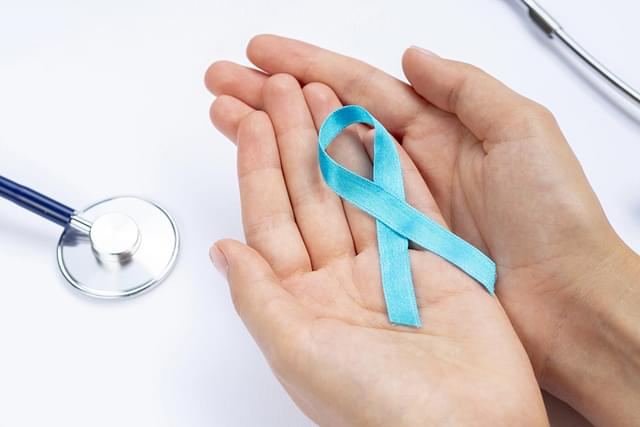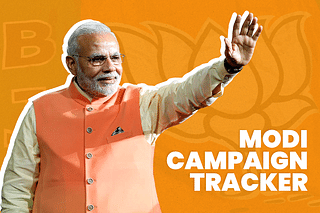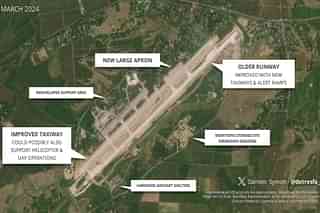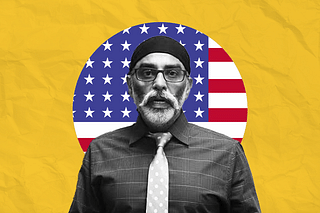Science
How The National Cancer Grid Is Helping Drastically Slash Costs Of Cancer Medicines In India
Karan Kamble
Jan 19, 2024, 02:17 PM | Updated 03:40 PM IST
Save & read from anywhere!
Bookmark stories for easy access on any device or the Swarajya app.

It is estimated that one in nine people in India may likely develop some form of cancer. In 2022 alone, some 14.61 lakh cancer cases were registered in the country, up from 13.92 lakh cases in 2020.
With inevitable cancer comes the inevitable cancer treatment. From detection, diagnostics, to treatment, cancer is a very expensive disease to manage. Chemotherapy, for instance, costs Rs 8 lakh for 10 cycles.
Given this reality, some cancer care centres in India are coming together to make cancer care affordable, and therefore accessible, to the vast majority of the people.
The National Cancer Grid — a collaborative initiative led by India’s premier cancer hospital, Tata Memorial Centre — has come up with a model that slashes costs of cancer care in India to unbelievable levels.
The network of more than 250 cancer centres, research organisations, and patient groups piloted the “pooled procurement initiative” in 2019 to remarkable results. Bulk-buying of 40 high-value anti-cancer and supportive care medicines by 23 centres in the network (both public and private) led to savings of Rs 1,320 crore against the maximum retail prices!
The savings ranged from 23 per cent to 99 per cent, with a median of 82 per cent (that is, 82 per cent savings on at least half of the drugs purchased), notes a 2023 paper by various authors involved in the NCG initiative. It speaks to the “advantages of group negotiation in pooled procurement for high-value medicines,” the study says.
When drugs are procured at the individual hospital level, as is typically the case, the procurement is constrained by various factors. Hospitals might, for instance, settle on low-priced, poor-quality generic medicines, and yet they may incur significant costs for the drugs due to the low demand.
Since the centres in the NCG network care for almost two-thirds of all patients with cancer in India, they are better-placed to bulk buy high-volume, high-quality drugs at dramatically cheap rates — this was proven to be the case in the NCG pilot. Great savings were achieved not just for generic drugs but even in the procurement of some innovator drugs.
Local geography, which is typically a limiting factor for access to drugs and treatments, did not matter, thus enabling equal access to essential cancer care across the various regions of India and improving overall treatment outcomes.
The BBC reported on 9 January how the Cachar Cancer Centre in Assam, the only facility of its kind in the country’s northeast, “has seen an unusually high number of patients from nearby towns and villages” in recent months.
In this way, the pooled procurement and group negotiation activities conducted by NCG between September 2019 and October 2020 has worked wonders.
“The potential impact of cost savings is huge, in not only improving the affordability of care and decreasing out-of-pocket costs for patients, but allowing for the re-allocation of drug procurement funds towards other initiatives to deliver high-quality care,” says the 2023 study whose lead author is C S Pramesh of Tata Memorial Hospital.
“This must rank as one of our most satisfying and fulfilling efforts at democratizing access to cancer medicines,” Pramesh, also the NCG convenor, said on X recently.
He also advocated for the replication of this model in other disease areas and geographies. That would extend the benefits of a more affordable, even access to high-volume, high-quality, essential medicines beyond the treatment of cancer and even the country of India. (Some European countries have exercised the pooled procurement of drugs but with a narrower scope and limited benefits.)
In the next round of NCG’s pooled procurement drive, the cancer grid plans to procure over 100 drugs and this time include consumables, equipment, and electronic health record systems. More member centres of the cancer grid might participate in the second exercise, thanks to the success obtained in the maiden round.
Outcomes from the next exercise will determine whether this model becomes the go-to for procurement of not just essential cancer medicines, but all essential medicines, equipment, and supplies in the future — thus minimising disparities in medical care.
Save & read from anywhere!
Bookmark stories for easy access on any device or the Swarajya app.
Karan Kamble writes on science and technology. He occasionally wears the hat of a video anchor for Swarajya's online video programmes.
Introducing ElectionsHQ + 50 Ground Reports Project
The 2024 elections might seem easy to guess, but there are some important questions that shouldn't be missed.
Do freebies still sway voters? Do people prioritise infrastructure when voting? How will Punjab vote?
The answers to these questions provide great insights into where we, as a country, are headed in the years to come.
Swarajya is starting a project with an aim to do 50 solid ground stories and a smart commentary service on WhatsApp, a one-of-a-kind. We'd love your support during this election season.
Click below to contribute.





